The AMD Ryzen Threadripper 1950X and 1920X Review: CPUs on Steroids
by Ian Cutress on August 10, 2017 9:00 AM ESTShadow of Mordor
The next title in our testing is a battle of system performance with the open world action-adventure title, Middle Earth: Shadow of Mordor (SoM for short). Produced by Monolith and using the LithTech Jupiter EX engine and numerous detail add-ons, SoM goes for detail and complexity. The main story itself was written by the same writer as Red Dead Redemption, and it received Zero Punctuation’s Game of The Year in 2014.
A 2014 game is fairly old to be testing now, however SoM has a stable code and player base, and can still stress a PC down to the ones and zeroes. At the time, SoM was unique, offering a dynamic screen resolution setting allowing users to render at high resolutions that are then scaled down to the monitor. This form of natural oversampling was designed to let the user experience a truer vision of what the developers wanted, assuming you had the graphics hardware to power it but had a sub-4K monitor.
The title has an in-game benchmark, for which we run with an automated script implement the graphics settings, select the benchmark, and parse the frame-time output which is dumped on the drive. The graphics settings include standard options such as Graphical Quality, Lighting, Mesh, Motion Blur, Shadow Quality, Textures, Vegetation Range, Depth of Field, Transparency and Tessellation. There are standard presets as well.
We run the benchmark at 1080p and a native 4K, using our 4K monitors, at the Ultra preset. Results are averaged across four runs and we report the average frame rate, 99th percentile frame rate, and time under analysis.
All of our benchmark results can also be found in our benchmark engine, Bench.
MSI GTX 1080 Gaming 8G Performance
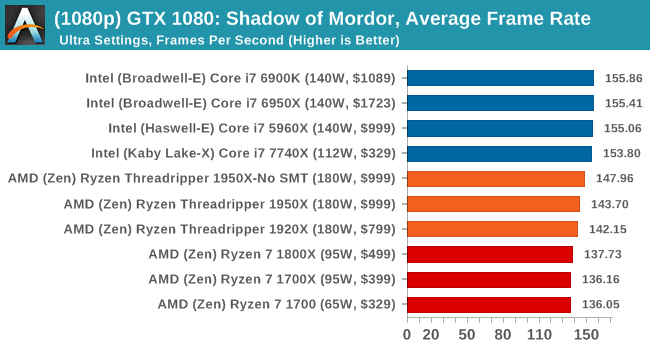
1080p


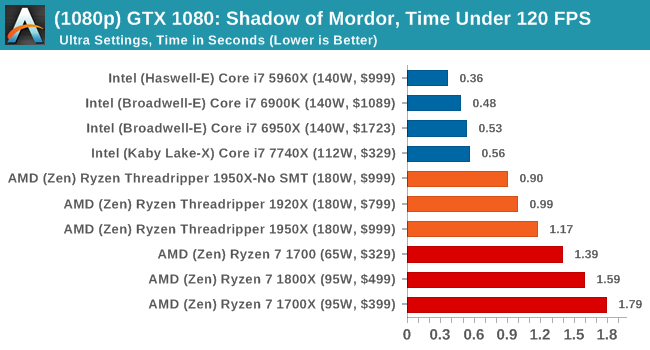
4K
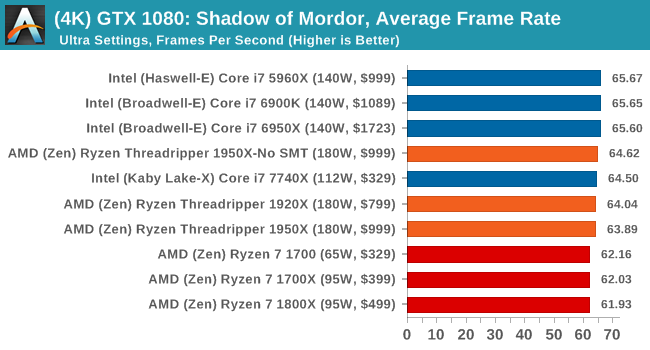
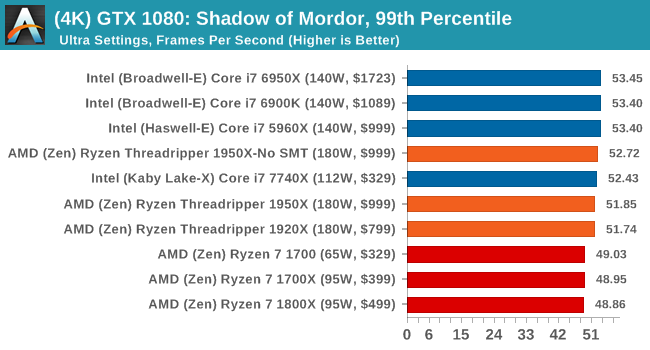
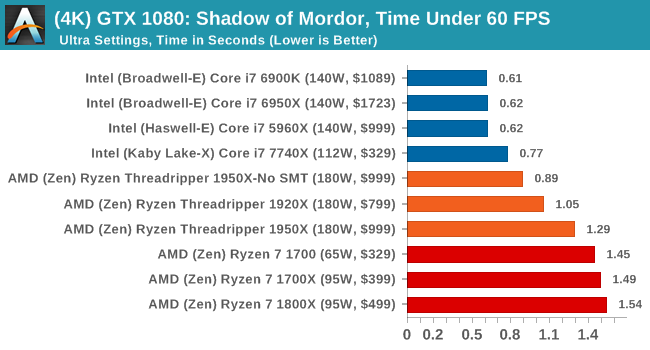
ASUS GTX 1060 Strix 6G Performance
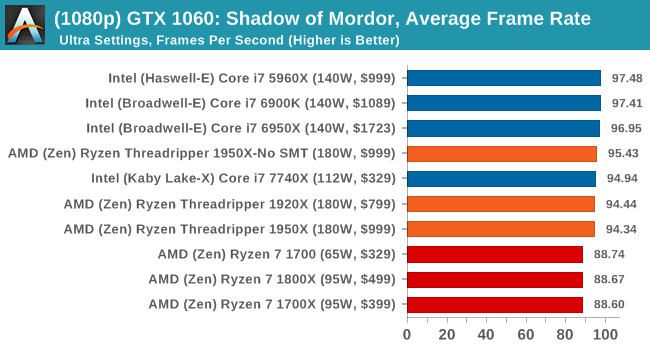
1080p

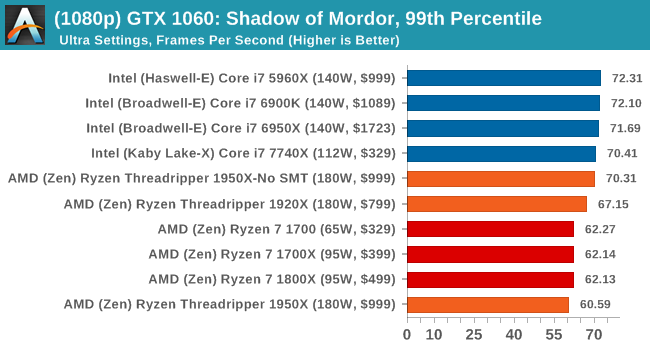
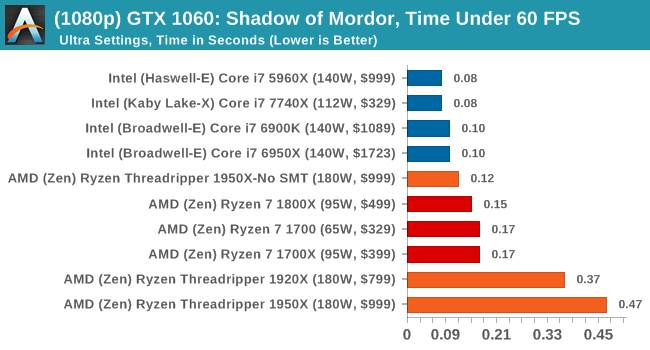
4K
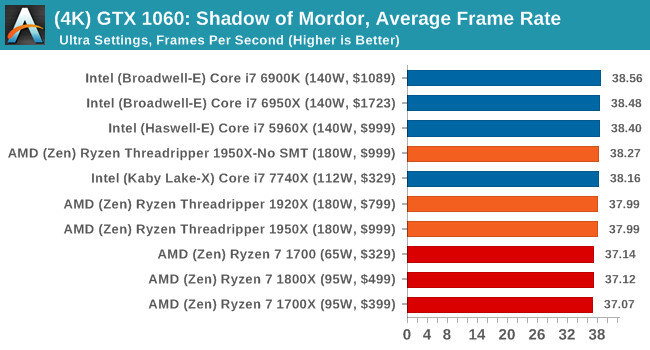
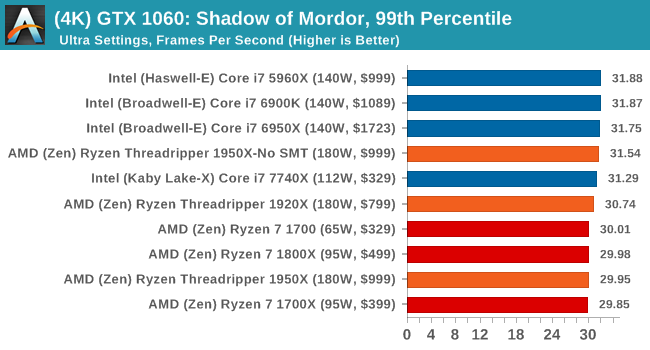
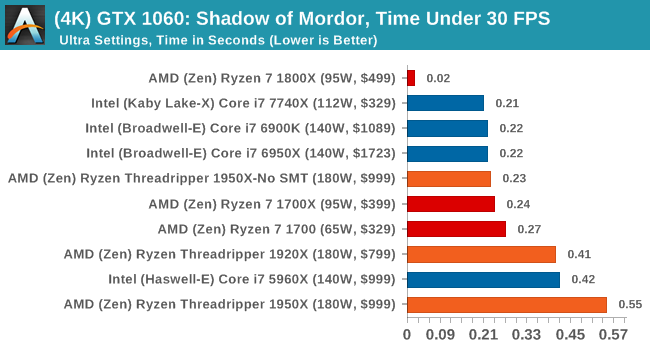
Sapphire Nitro R9 Fury 4G Performance
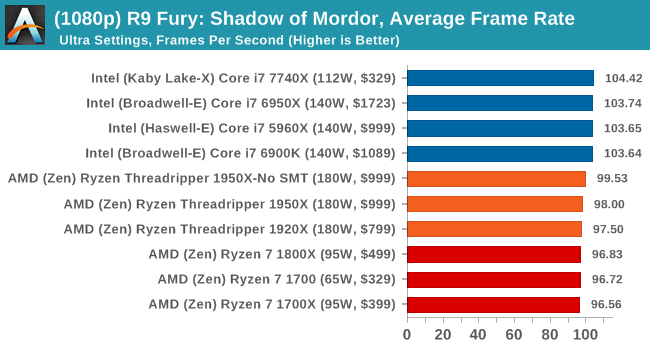
1080p


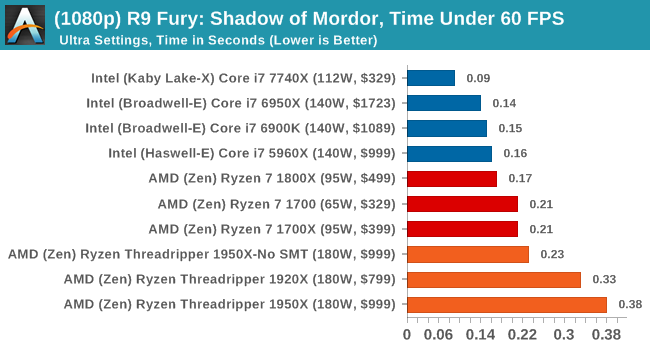
4K
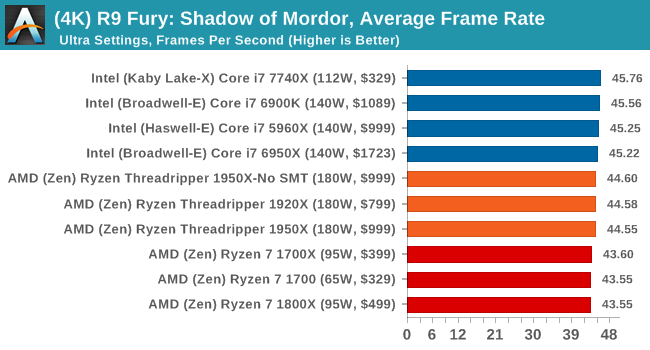

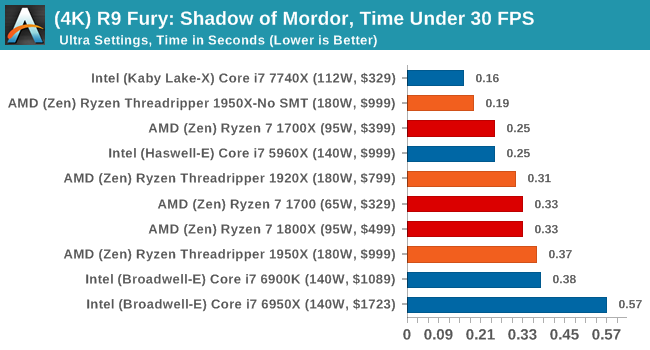
Sapphire Nitro RX 480 8G Performance
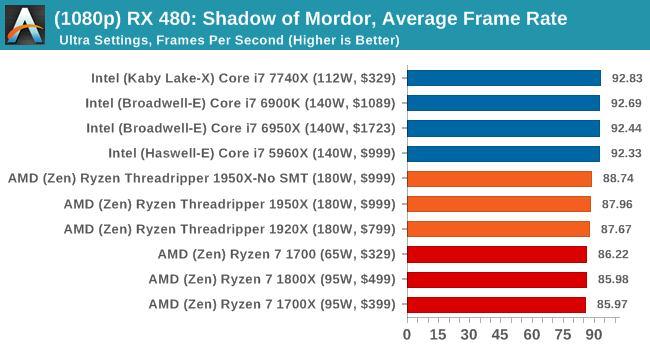
1080p


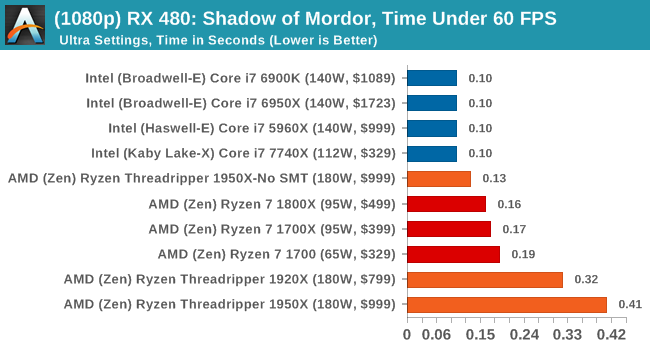
4K

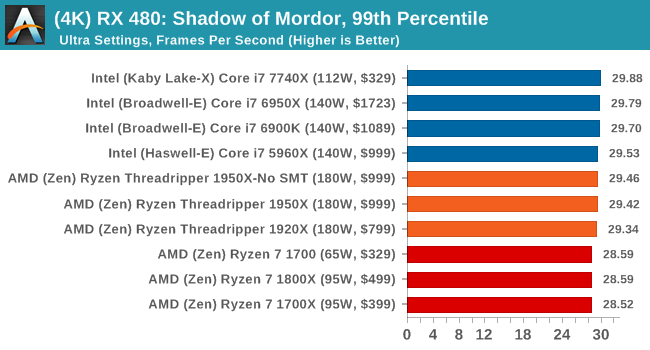



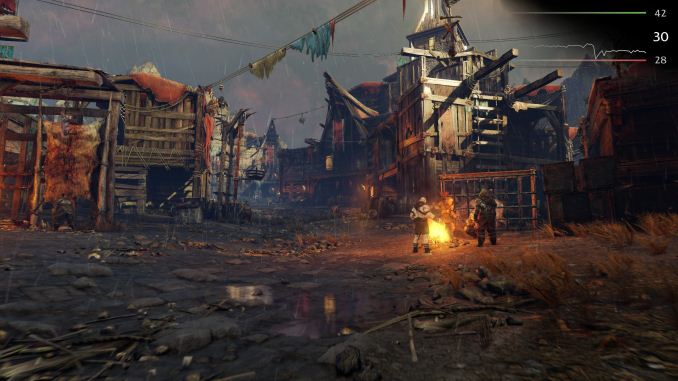
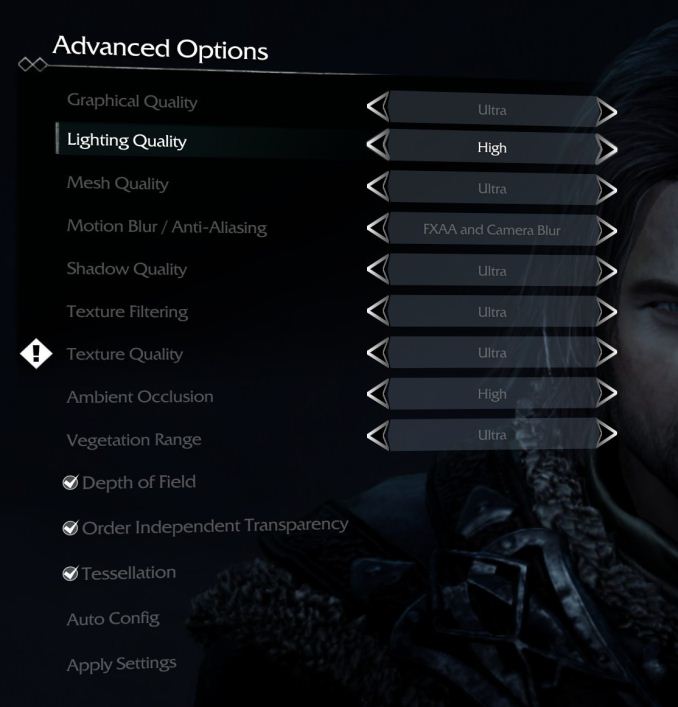








347 Comments
View All Comments
Notmyusualid - Sunday, August 13, 2017 - link
Yep, I'll get the door for him.Jeff007245 - Friday, August 11, 2017 - link
I don't comment much (if ever), but I have to say one thing... I miss Anand's reviews. What happened to AnandTech?What ever happened to IPC testing when IPC used to be compared on a clock for clock basis? I remember the days when IPC used to be Instructions Per Clock, and this website and others would even use a downclock/overclock processors at a nominal clock rate to compare the performance of each processor's IPC. Hell, even Bulldozer with a high clock architecture was downclocked to compare is "relative IPC" in regards using a nominal clockrate.
And to add to what other's are saying about the bias in the review... Honestly, I have been feeling the same way for some time now. Must be because AnandTech is at the "MERCY" of their mother company Purch Media... When you are at the mercy of your advertisers, you have no choice but to bend the knee, or even worse, bend over and do as they say "or else"...
Thanks for taking the time in creating this review, but AnandTech to me is no longer AnandTech... What other's say is true, this place is only good for the Forums and the very technical community that is still sticking around.
fanofanand - Tuesday, August 15, 2017 - link
Downclocking and overclocking processors to replicate a different processor within the same family can lead to inaccurate results, as IPC can and does rely (at least to a degree) on cache size and structure. I get what you are saying, but I think Ian's work is pretty damn good.SloppyFloppy - Friday, August 11, 2017 - link
Why did you leave out the i9s from the gaming tests?Why didn't you include the 7700k when you include 1800x for gaming tests?
People want to know that if they buy a $1k 7900X or 1950X if it's not only great for media creation/compiling but also gaming.
silverblue - Friday, August 11, 2017 - link
Stated why at the bottom of page 1. Also, he used the 7740X, so there is little to no point in putting the 7700K.Lolimaster - Friday, August 11, 2017 - link
The 1950X is as good at gaming as the 1800X, OCed 1700, with many more cpu resource to toy with.Swp1996 - Friday, August 11, 2017 - link
Thats The Best Title I have ever seen ...😂😂😂😂🤣🤣🤣🤣🤣 Steroids 😂😂😂🤣🤣🤣🤣🤣🤣🤣corinthos - Friday, August 11, 2017 - link
in other words.. AMD Ryzen is still the best bet for most people, and the best value. 1700 OC'd all day!BillBear - Friday, August 11, 2017 - link
>Move on 10-15 years and we are now at the heart of the Core Wars: how many CPU cores with high IPC can you fit into a consumer processor? Up to today, the answer was 10, but now AMD is pushing the barrier to 16I don't personally think of Threadripper or parts like Broadwell-E as being consumer level parts.
For me, the parts most consumers use have been using for the last decade have been Intel parts with two cores or four cores at the high end.
It's been a long period of stagnation, with cutting power use on mobile parts being the area that saw the most attention and improvement.
James S - Friday, August 11, 2017 - link
Agree the HEDT platforms are not for the average consumer they are for enthusiasts, professional workstation usage, and some other niche uses.When the frequency war stopped and the IPC war started. We should have had the core competition 5-8 years back since IPC stagnated to a couple percent gains year on year.